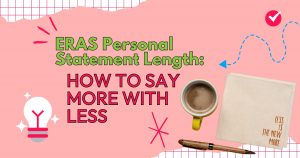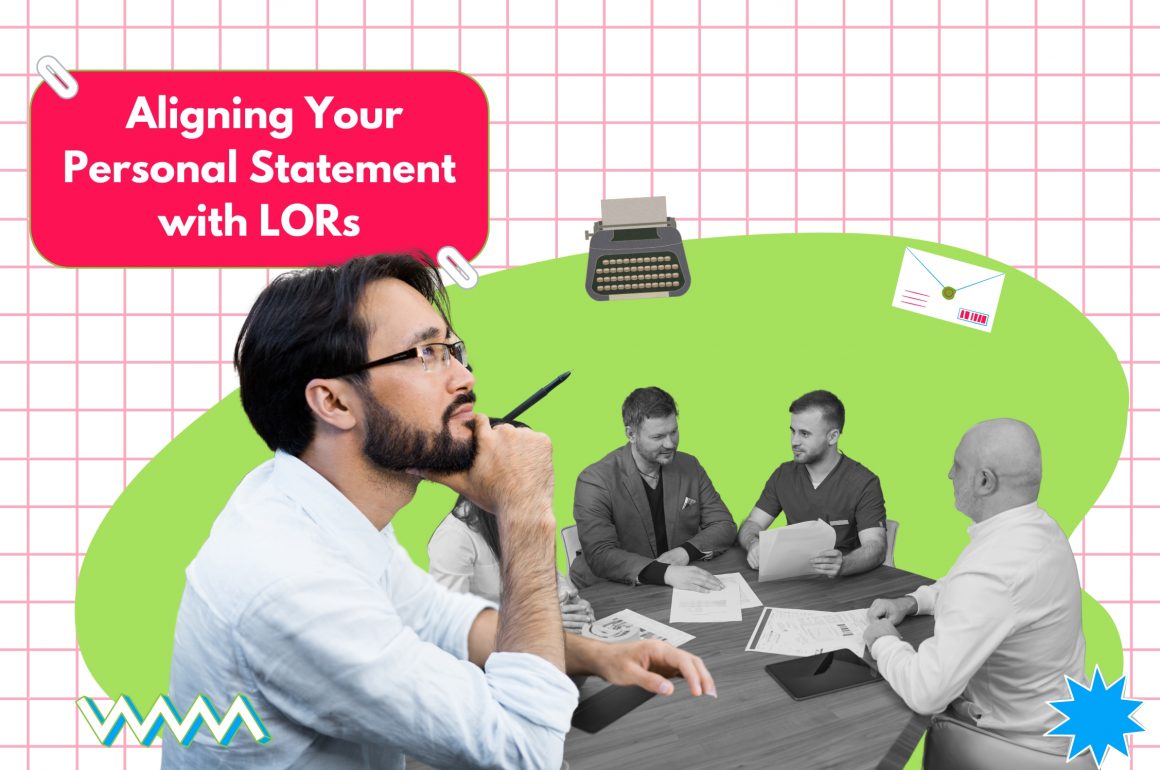
The personal statement is one of the most crucial components of your ERAS application. It’s your chance to convey who you are beyond your grades, test scores, and CV. However, crafting a compelling narrative within the ERAS personal statement length limit can be challenging. Here, we’ll explore strategies to help you say more with less, ensuring your statement is impactful and memorable.
Understanding the ERAS Personal Statement Length
The Electronic Residency Application Service (ERAS) allows for a personal statement of up to 28,000 characters, including spaces. This translates to approximately one page, single-spaced, in a standard word processing program. While this may seem generous, fitting your entire story into such a limited space requires careful planning and concise writing. The ERAS personal statement length is a critical factor that you must navigate effectively to make a strong impression.
Why Length Matters
Program directors review countless personal statements, so brevity and clarity are essential. A well-crafted, concise personal statement demonstrates your ability to communicate effectively—an important skill for any physician. Moreover, exceeding the ERAS personal statement length limit or filling your statement with fluff can detract from the powerful points you want to make.
Strategies for Saying More with Less
- Start with a Strong Outline
Before you start writing, outline the main points you want to cover. These might include your motivation for pursuing medicine, significant experiences, skills and attributes you bring to the program, and your future goals. Having a clear structure in mind will help you stay focused and ensure you cover all essential points without unnecessary digressions. This planning is crucial, especially given the ERAS personal statement length constraints.
- Be Selective with Content
You likely have many experiences and achievements you could discuss, but not all of them will fit into a single personal statement. Prioritize those that are most relevant to the specialty you’re applying for and that best demonstrate your qualifications and personal growth. Quality over quantity is key—choose a few significant experiences and elaborate on them rather than listing many superficially. This approach helps you manage the ERAS personal statement length effectively.
- Use Clear and Concise Language
Avoid overly complex sentences and medical jargon. Your goal is to communicate your story in a way that’s easy to understand. Use straightforward language and get to the point quickly. Every word should serve a purpose; if a sentence doesn’t add value, consider cutting it. Being concise is essential to staying within the ERAS personal statement length limit.
- Show, Don’t Tell
One of the most effective ways to make a point succinctly is to show rather than tell. Instead of saying, “I am compassionate,” describe a specific instance where you demonstrated compassion. This approach not only saves space but also makes your statement more vivid and memorable. Using specific examples efficiently helps you make the most of the ERAS personal statement length.
- Use Active Voice
Active voice is more direct and vigorous than passive voice. For example, “I led a team” is stronger and more concise than “A team was led by me.” This small change can make your writing clearer and more engaging, which is crucial when dealing with the ERAS personal statement length constraints.
- Focus on Transitions
Smooth transitions between paragraphs and ideas make your statement easier to read and understand. Instead of jumping abruptly from one topic to another, use transitional phrases to guide the reader through your narrative. This cohesion can help you maintain a concise yet comprehensive statement within the ERAS personal statement length.
- Avoid Redundancies
Redundancies and repetitive phrases can bloat your statement unnecessarily. For example, saying “completely finished” or “each and every” adds unnecessary words. Be mindful of such redundancies and aim to be as precise as possible to stay within the ERAS personal statement length limit.
- Edit Ruthlessly
Editing is crucial. After writing your first draft, take a break and then return to it with fresh eyes. Cut any unnecessary words, sentences, or even paragraphs that don’t contribute significantly to your story. Consider asking a mentor, advisor, or colleague to review your statement and provide feedback. This rigorous editing process helps you refine your statement to fit the ERAS personal statement length.
- Highlight Key Qualities and Experiences
Identify the key qualities and experiences you want to emphasize and ensure they stand out. Use specific examples to illustrate these points and connect them directly to the skills and attributes that are important for the residency program you’re applying to. This focus is essential to making the most of the ERAS personal statement length.
- Keep the End Goal in Mind
Your personal statement should clearly convey why you are a good fit for the residency program and how you will contribute to and benefit from it. Keep this end goal in mind throughout your writing process to ensure your statement remains focused and relevant, fitting within the ERAS personal statement length.
Example: Before and After
To illustrate these strategies, let’s look at an example of a before and after transformation of a personal statement excerpt.
Before:
“I have always been interested in medicine. Since I was a child, I knew I wanted to become a doctor because I enjoy helping people. During my undergraduate studies, I volunteered at a local hospital. This experience taught me a lot about patient care and reinforced my desire to pursue a career in medicine. I am a compassionate and dedicated individual, and I believe these qualities will make me a good doctor.”
After:
“My passion for medicine was ignited during my undergraduate studies when I volunteered at a local hospital. One memorable experience was comforting a nervous child before surgery, which taught me the importance of empathy in patient care. This reinforced my commitment to becoming a physician who combines medical expertise with compassion.”
Analysis:
- The after version is more concise and vivid.
- Specific experiences are used to illustrate qualities.
- Redundant phrases are eliminated.
- The language is more engaging and direct.
- The statement fits well within the ERAS personal statement length.
Common Pitfalls to Avoid
- Clichés and Generalities: Avoid generic statements like “I want to help people.” Be specific about your motivations and experiences.
- Excessive Detail: While details are important, avoid getting bogged down in minutiae that don’t contribute to the overall narrative.
- Negativity: Focus on positive experiences and what you have learned from challenges, rather than dwelling on negative aspects.
- Overly Formal Language: While your tone should be professional, it should also be personal and reflective of your unique voice.
Final Thoughts
Writing a compelling ERAS personal statement within the length limit is a challenging but achievable task. By being selective with your content, using clear and concise language, and focusing on specific experiences, you can create a powerful narrative that resonates with residency program directors. Remember, your personal statement is an opportunity to showcase who you are beyond your academic achievements—make every word count and stay within the ERAS personal statement length.
Conclusion
Crafting a strong ERAS personal statement is about making a big impact with limited space. With thoughtful planning, precise language, and careful editing, you can convey your story compellingly and effectively. Embrace the challenge, and use these strategies to create a personal statement that truly reflects your journey and aspirations in medicine, all while adhering to the ERAS personal statement length.
Need help to get started? Explore ResidencyStatement.com for expert personal statement writing and editing services to help you craft a compelling and concise drafts. Start today and make your application stand out!









